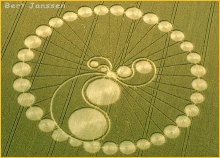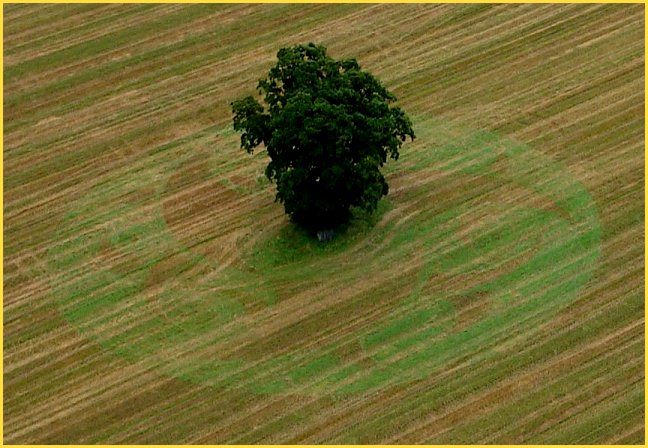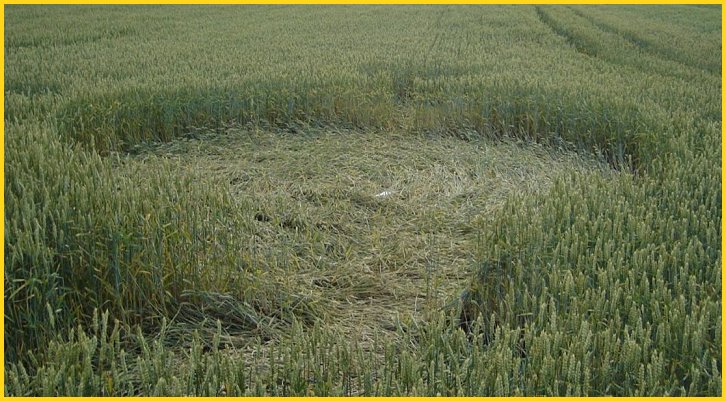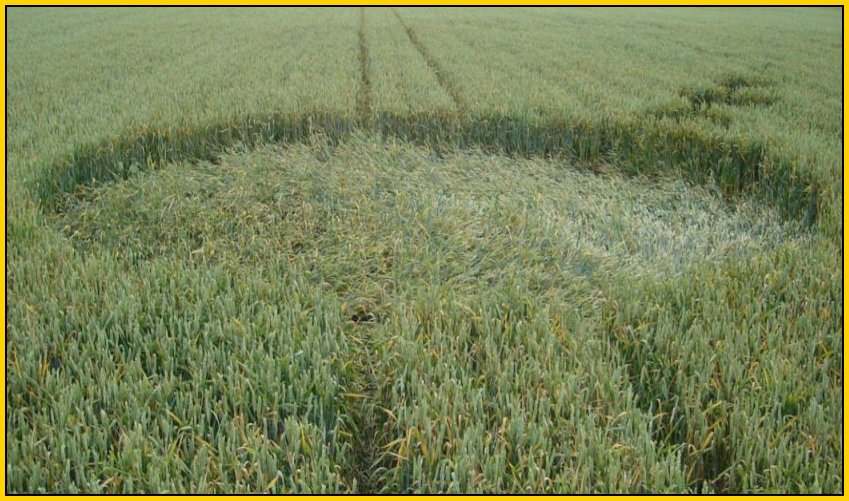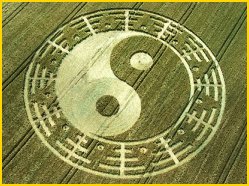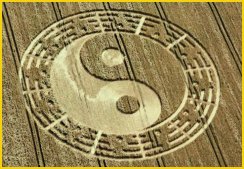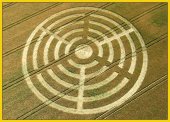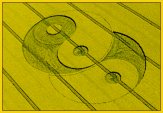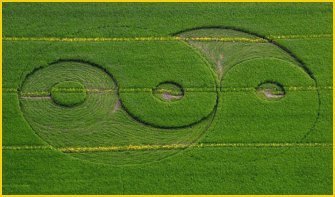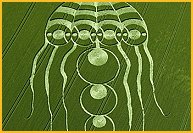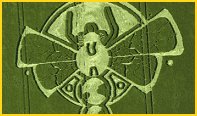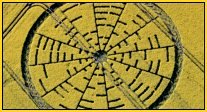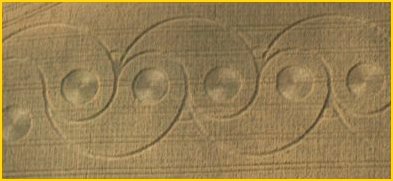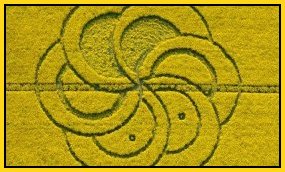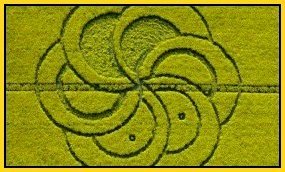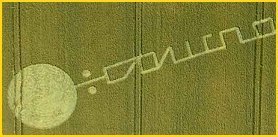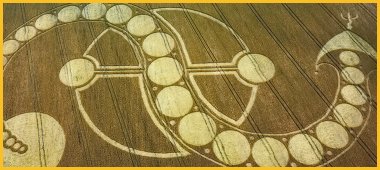back to part 1
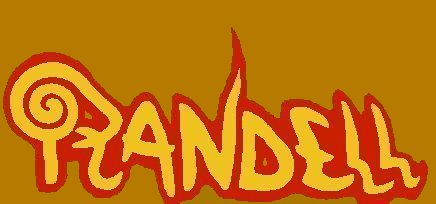
self reflecting ©
main page (Dutch)
cropcircle research
Stantonbury Hill, july 2007. (part 2)
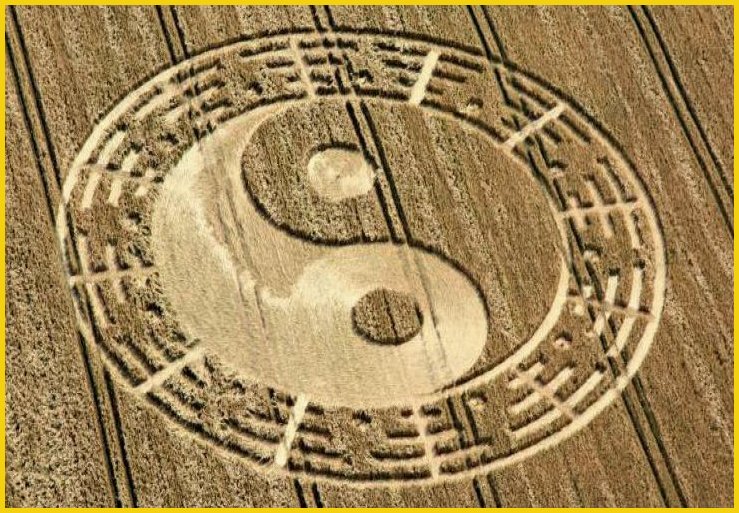
© photo: Lucy Pringle
Before and after completion
(Continuation Stantonbury Hill cropcircle.)
Untill here it has been sort of a struggle for me to place the trigrams in their proper perspective.
Thought I had reached an exceptable result by filtering the susceptible trigrams with their changing lowest line
out but than I started meditating about the frames again...Staring at these trigrams while still wondering why
there are no hexagrams like I'm used of the I tjing, it suddenly occured to me that when the lines of the trigrams
seem to have the ability to turn into lines of a frame than the opposite could also be the case! Of course!
In this formation there shure are extra trigrams to be discovered!
The extra one's are 12 "creating" trigrams. Becouse of my mindset that immediatly sticked to the idea of seeing frames it was not possible to hold these lines for changing Yang lines before.
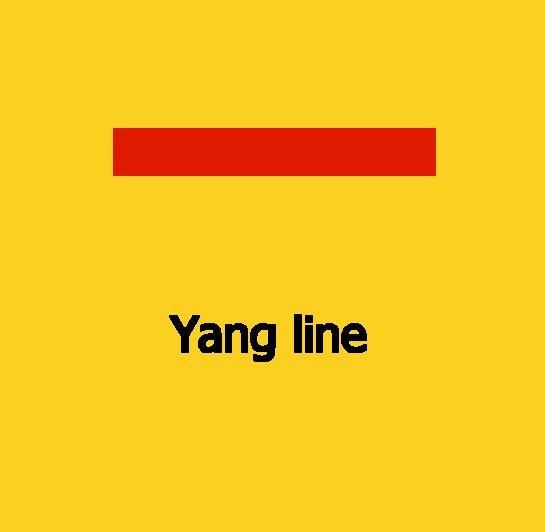
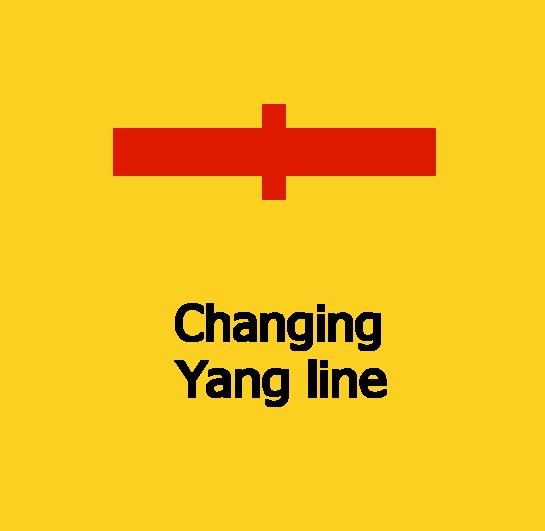
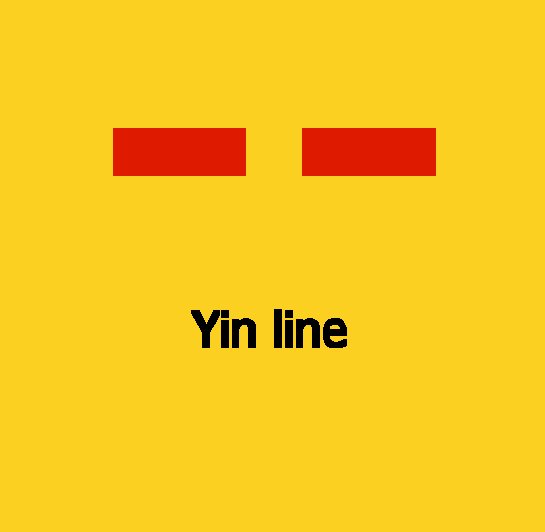
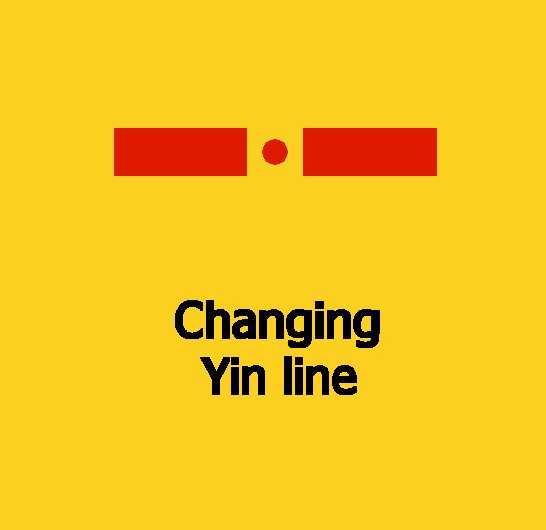
The usual notation of the lines.
It is common use to make a little crossline when the line is at transformation. After all, a point would
disappear against the line.
Now that three Yang lines are changing at the same time the three crosslines happen to
connect so that they look like one line. It's a tricky something which shows how easy things can be hidden.
But having this much, can we speak of hexagrams now? Hardly.
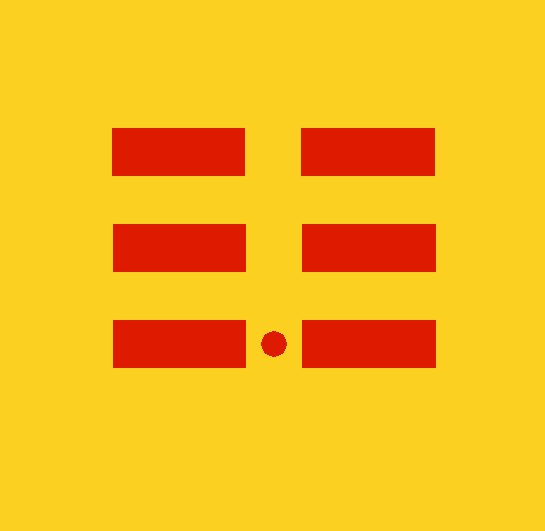
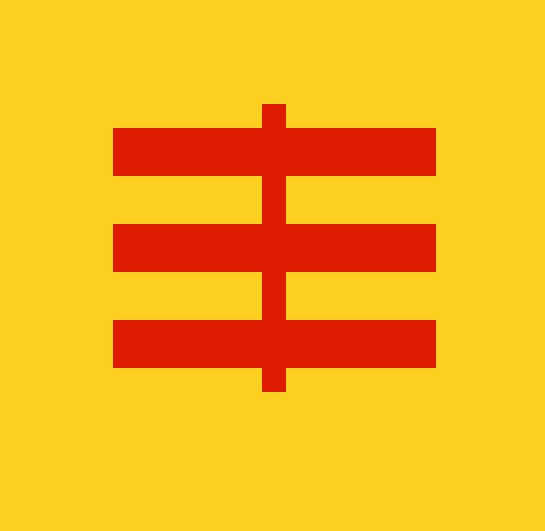
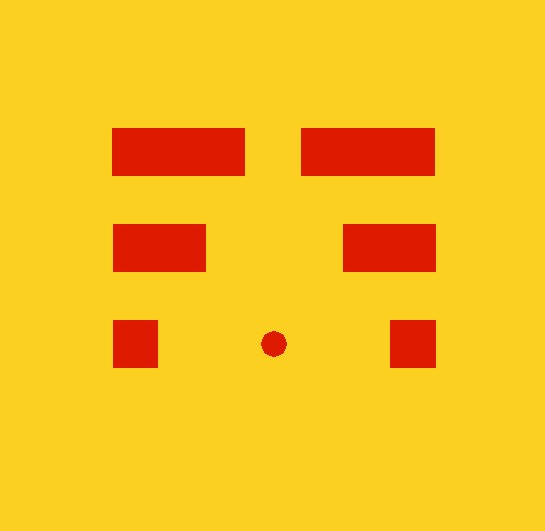
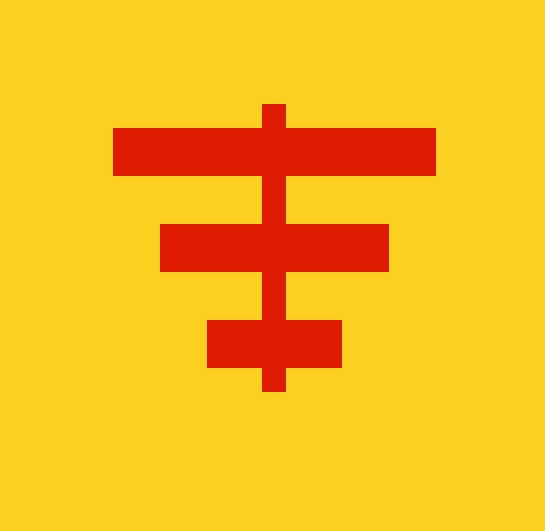
Left; the earlier found susceptible trigram. Right; the creative trigram.
At least we can comment these extra trigrams. They are as said "creative trigrams". They contain only heavenly
Yang lines that represent power of activity. On top of that all three are in a changing mode. This of course
directs to extra powerful activity from the trancendent plane.
At the review of the changing lines the I Tjing makes a remarkable exception by the rare situation when all
lines change at the same time within the sign of creativity. Altough we are dealing here with a
creative TRIgram instead of a creative HEXAgram; the peculiarity tickles the imagination.
In case there are only changing Yang lines, this means:
A group of dragons appear without head. Salvation!
The overall sign starts to move and changes in "susceptibility", which character is devotion or surrender.
The power of creativity and the generousity of the susceptibility unites. The multitute of dragons refers to
power. The circumstance that their heads are hidden is refering to the devotion.
Being devoted in manner of acting when connected with the force of decision brings salvation.
It is the nature of heaven not to apear as head.
Creativity leads all that happens, but does not appear before the footlights. Towards the outside it does not
present as head. Also is the real power; lively and hidden at work, without visibility outward.
The sign changes into "the susceptible" that is completely receptive, and consequently shows no head.
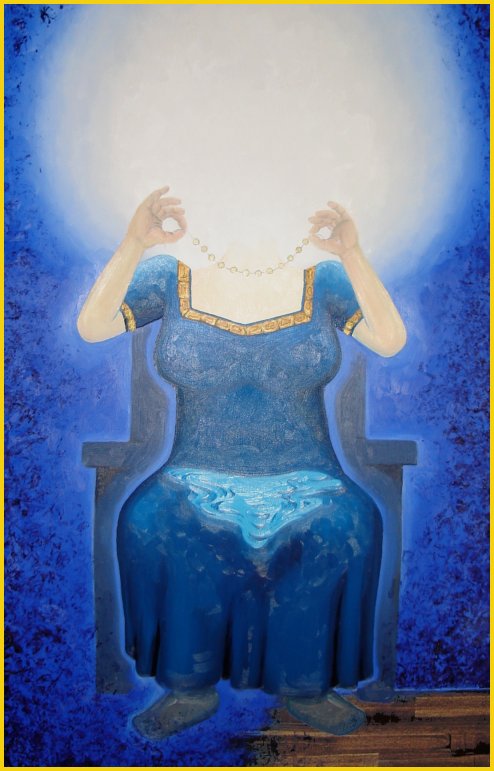
The susceptible as a mothergodess without head. © Randell.
When creativity and greatness transform all its (Yang) lines than the world comes to order.
When creativity and greatness transform all its (Yang) lines one observes the law of heaven.
As far as the matter of indeed or no hexagrams is concerned, it is necessary to conclude that again and again 2 trigrams are connected sideways with eachother. An earthly and a heavenly trigram everytime fading into eachother as if there's hardly any difference! Does that give us the ablility to speak of real hexagrams? If so, than how can we, conform the manner of usual writing (in which we see two trigrams on top of eachother), note these? I want to take a quick look at the Hat Gate Cottage formation to see if it holds a clue.
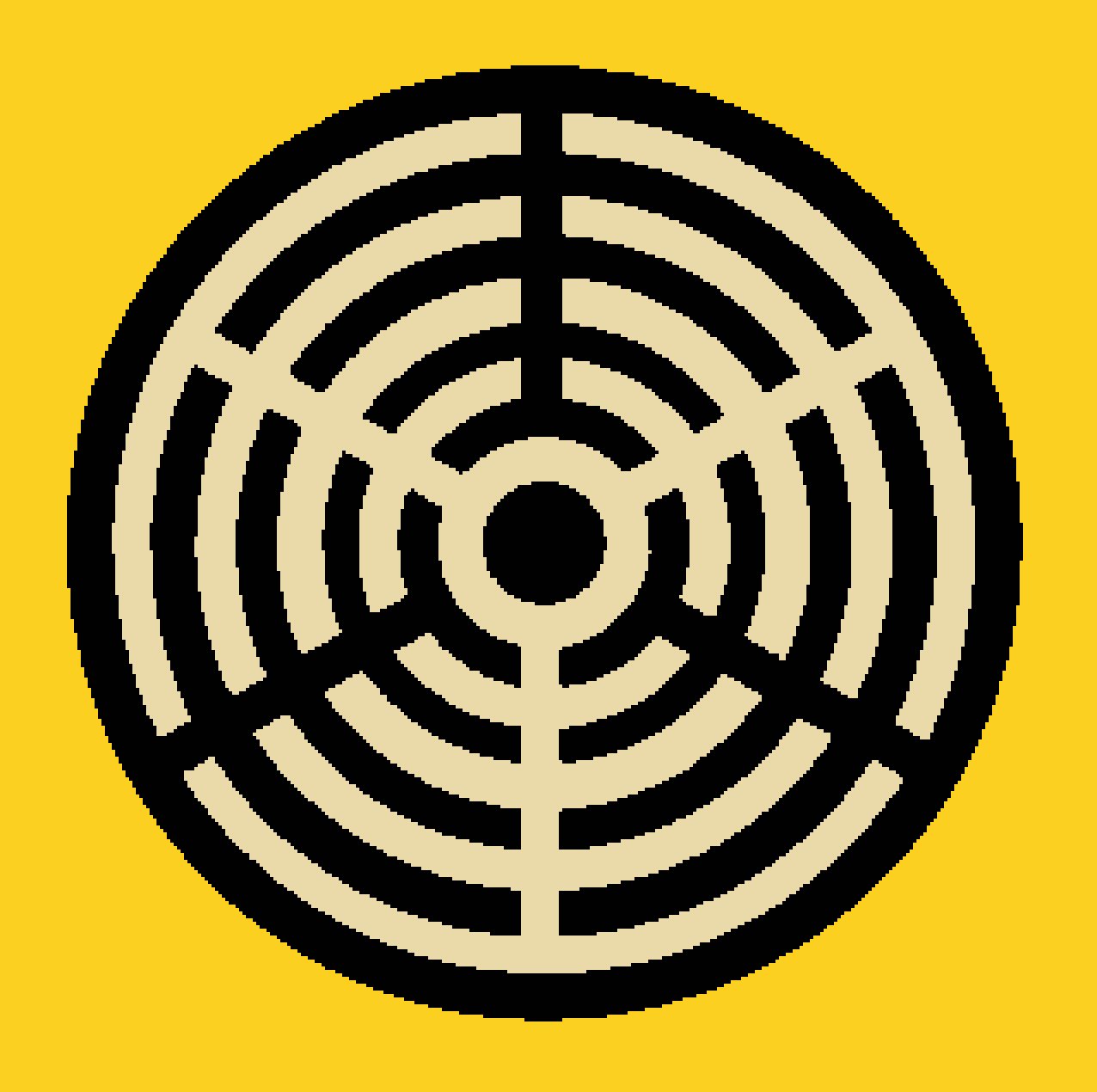
diagram: Hat Gate Cottage formation
Most striking about the formation is its harmonical distribution between the lines and the empty spaces that in most aspects share the same sizes. We see 5 concentric lines weaven in such a way with the empty spaces that these empty spaces can easely be kept for lines aswell. By that they form complementairy signs. When for the sake of comfort I'm allowed to pass the number of lines, than now we notice Yang power completed with Yin power. The powers comply in a gentle way turn and turn about. Translated to the traditional noting it means that the Yang lines follow up the empty Jin lines or vice versa. So, the ultimate Ying Yang principle I would say.
As far as the trigrams of the Stantonbury Hill formation is concerned it looks as if in case we are allowed to forge them together this also wants to be done every other line. As well the sideway "every other effect" as the Yin Yang sign as the complementairy attach within the Hat Gate pictogram support the idea. Now if the hypnotising Hat Gate Cottage diagram hasn't ripped me of my common sense yet I believe there are two manners of notation left:
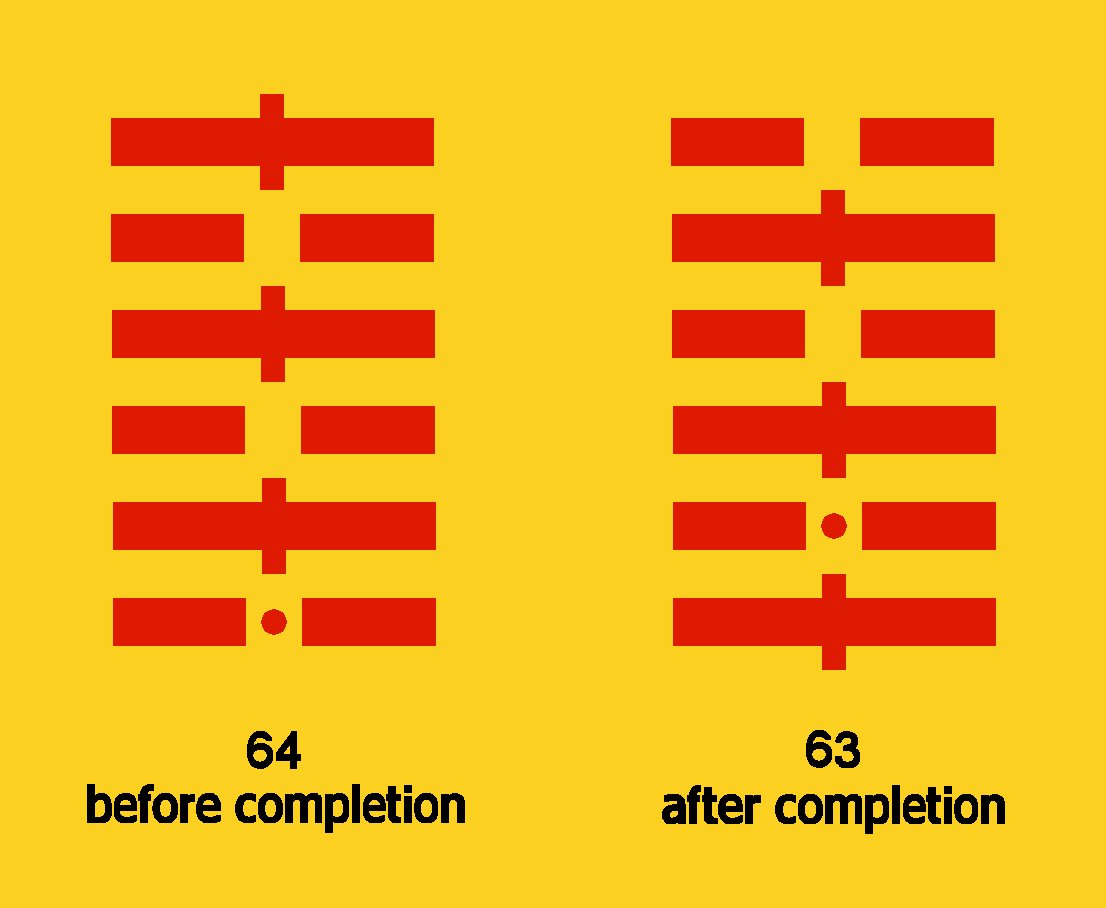
Both hexagrams are about completion.
To let there be no mistake; these two hexagrams are related to the Stantonbury Hill pictogram. I don't see any possebility to place one option above the other and therefore I suppose that this result has been put that way on purpose. It makes sense when we consider that both options are based upon the same theme, that is fulfilment or completion.
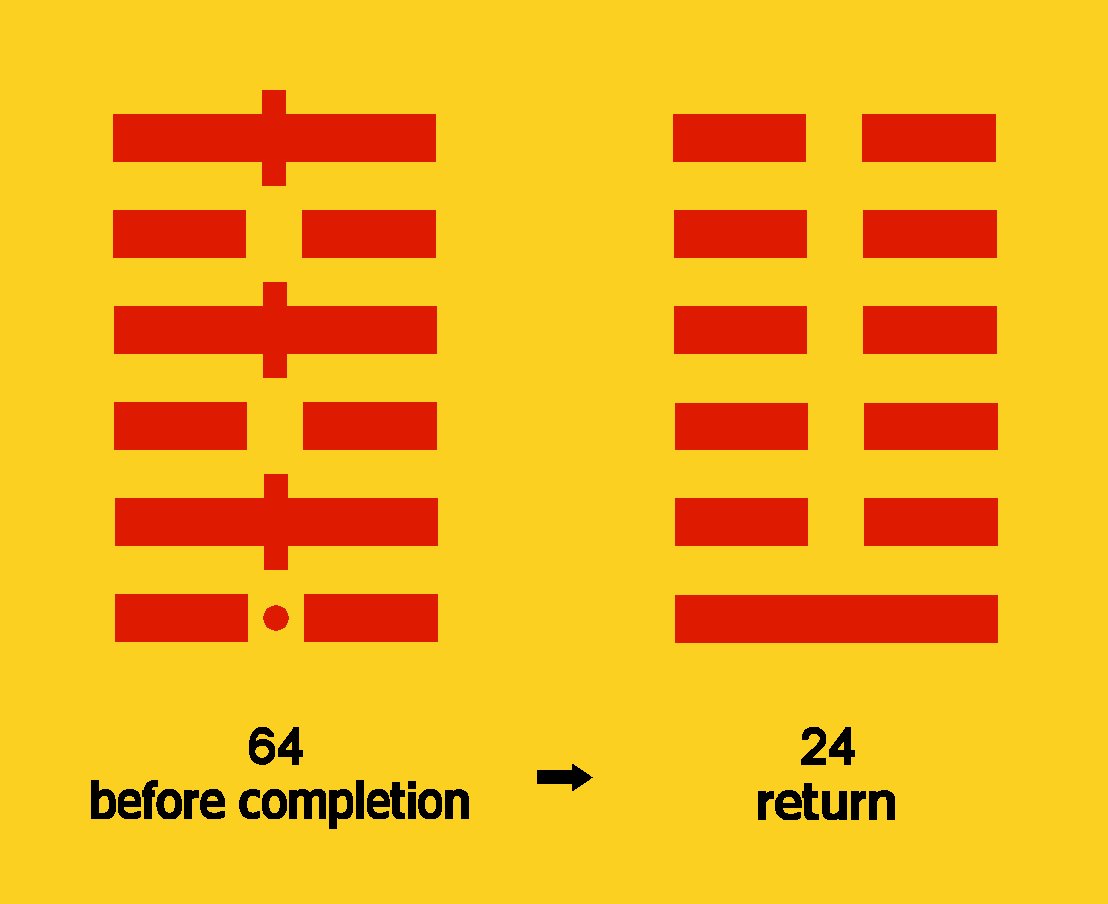
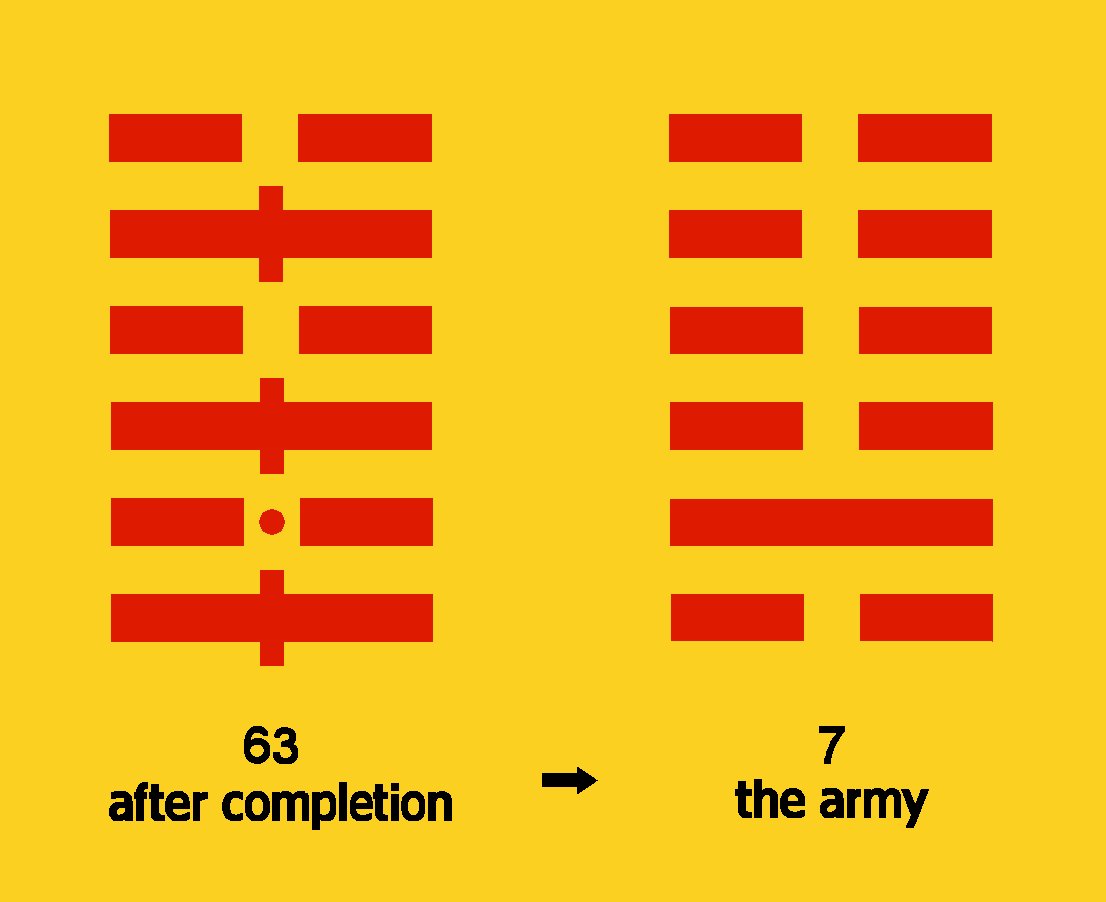
The hexagrams that arise as a result of the changes.
Anyway, for the explanation of the hexagrams I refer to the I Tjing itself. As a minimal introduktion for those that are not familiar with the I Tjing I will tell a little more about this magnificent book.
The I Tjing is also called the book of changes. It is an oracle and book of wisdom in one that is developed
in Chinese ancient times. Itís origin is said to date already 3000 before Chr. while it functioned as a founation
for the Chinese civilization. In essence the book counts sixty-four chapters, each based on a certain hexagram.
The hexagrams stand for periods in time. To each hexagram is a comment added that describes the periode and
tells you what eventually can be done in such situation.
As should be clear by now, there also exist trigrams that can get filtered out of the hexagrams. About these
trigrams the book also dwells at length on them. Besides this, the trigrams are the basic elements in the Chinese
science of landscapes, the wellknown Feng Shui. In fact Feng Shui is tightly woven wŪth the I Tjing. I guess we
can easily say that most cropformations are Feng Shui expressions of a hidden origin.
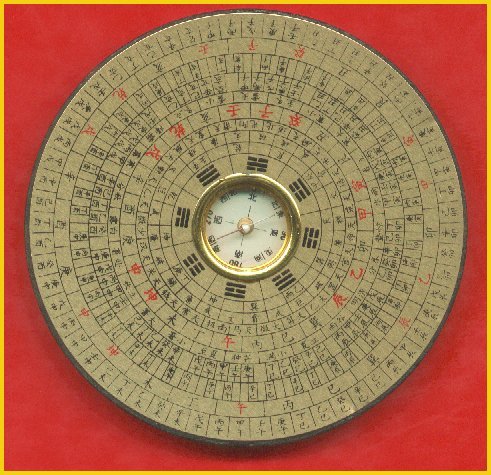
Feng Shui compass
(could it be mercy the compass counts 360 degrees?)
So, as a consultant of the oracle you will find yourself confronted with your own situation, the period of your
life that you are dealing with at that time. When properly used I Tjing will advise you by reflecting the
decisions that can be made according the situation.
Still it is not as easy as Iím describing things here. The book makes an appeal to the intuÔtion of its users.
After all could it be wisdom to leave the digesting of our lifelessons to an external institution at all?
The I Tjing understands enough not to go with a tendency like that, leaving responsability at its pupil.
Nevertheless, the book is evidently able to foresee in remarkable insight.
In case you would like to procure the book it might be good to know that there are quite a few editions in circulation that easily confuse the mind in stead of functioning as a valuable guide. Becouse of that it will be advisible to do some oriŽntation before buying. Myself, I use since many years the wellknown edition of Richard Wilhelm. Also the I Tjing for the 21st century of Han Boering can be considered as a must have altough I'm not sure if it has English versions.
May love, beauty, justice and wisdom be in reach for all people.
return to part I

